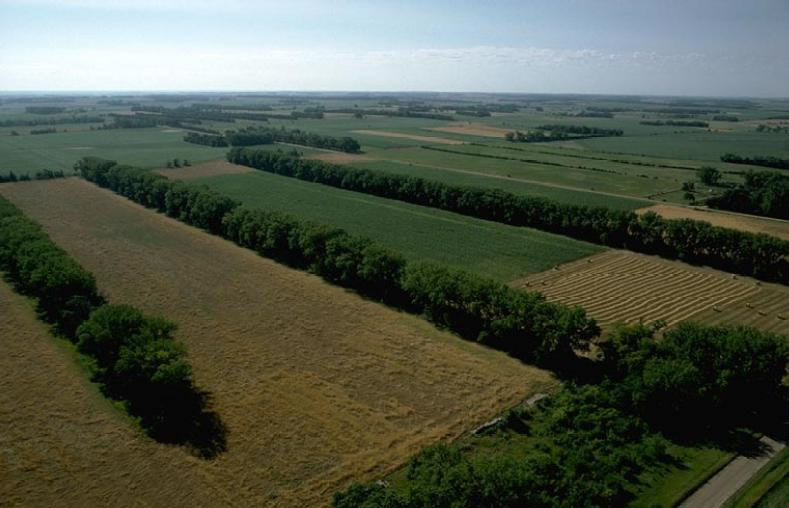Wind sensitive crops such as citrus, gooseberries, raspberries, blueberries etc would greatly benefit from a windbreak to prevent the young plants from breaking, foliage abrasion and also from flowers on older plants being damaged by strong or gusty winds.
Some farmers erect 6m, 9m or even 12m high plastic net systems to protect their crops from wind damage. These nets, cables and anchor systems are expensive and only last a few years before they need to be repaired or replaced. Synthetic products such as these can also have detrimental effects to the environment.
A good alternative is to plant a living hedge that can grow naturally, slowing down wind, minimizing gusts, but also creating a natural habitat for birds and other animal life, absorbing CO2, preventing soil erosion and adding more life to the land area.
The main impact of a windbreak is to reduce mean wind speed near the surface. Acting as a porous barrier to the flow, the windbreak creates a small region of wind reduction on the windward side and a low-speed, turbulent wake zone followed by a region of gradual wind speed recovery in the lee, as shown in Figure 1.
Figure 1.
Another use of the Elderberry tree
In addition to some of the abovementioned benefits, a plant such as the elderberry can also provide flowers and fruit which can be used as a secondary crop compared the primary crop which it protects from wind damage. The elderberry grows in almost all soils and is salt and frost tolerant. It is a vigorous, evergreen and easy growing shrub that can grow more than 2m per year to a height of up to 9m tall. If the elderberry is planted 1m to 1.5m apart in the row, it will form a thick hedge making it ideal for a natural windbreak. Some farmers even plant 1.5m apart in the row with a double row approximately 1.5m from the second row, planting the second row’s plant in the centre (gap) of the first row’s plants to form an even better wind break such as in Figure 2 below.
Figure 2
Figure 3 (example of a natural wind break)
Figure 4 (example multiple wind breaks)
Humidity
Humidity, the water vapor content of the air, is a major factor in the regulation of crop microclimate. Decreases in turbulent mixing reduce the amount of water vapor transported away from surfaces in the sheltered area. As a result, humidity and vapor pressure gradients are generally greater in shelter both during the day and at night (study done by McNaughton, 1988). As water vapor is a strong absorber of infrared radiation, higher humidity levels in shelter tend to protect the crop from radiative heat losses, reducing the potential for frost.
Elderberry plants and prices
Below are two examples of our elderberry plants. The prices on the 3L size pot plants vary between R61.20 and R86.95 ex VAT depending on the order quantity and the hardened off seedlings (plugs) are between R16.40 and R18.85 ex VAT each. There is a minimum order quantity of 500 for the elderberry plugs. The plugs are hardy and can be planted directly into the soil. No minimum order quantity for the larger 3L plants.
3L pot size elderberry plant
Elderberry hardened off seedlings (plugs)
For more information on growing elderberry plants visit our website at
http://vpstestc.clientportal.co.za/our-berry-plants/elderberry/
The Berries For Africa team,
Leander: 084 513 6886


